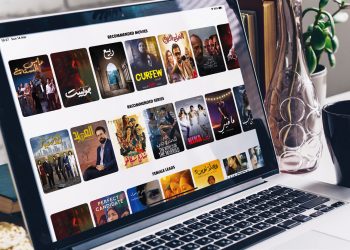The Arabic content market is a complex labyrinth that requires a fair degree of expertise to navigate, and the entry of new platforms has added to this complexity. Content expert Heba Korayem takes us through some of the twists and turns of the industry's production scene.
Eight years ago, the Arabic content industry was fairly straightforward when it came to the monetisation life cycle of a video asset, like an Arabic drama series or a movie. A tight-knit TV industry thriving on personal relationships meant that a limited selection of production houses produced content for TV/ theatre, with a simple windowing process that normally only involved theatre (for movies), followed by pay TV, then free TV.
Finally, almost everything landed on YouTube for residual revenues, a convenient and cheap catch-up solution. In most cases, the monetisation cycle only went through the last two stages, especially during the month of Ramadan.
This lasted until roughly 2017, when OTT platforms started popping up in MENA at almost the same rate as linear channels on satellite back in 1997. Fresh demand was created by these new buyers coming into the Arabic content marketplace.
“We all know drama sells in MENA. That’s why a whopping 56% of OTT releases are drama series, 40% of them portraying societal stories/ relationships – OTTs have chosen a conservative ‘if it’s not broken, don’t fix it’ approach”
However, in an industry still almost fully funded by ad spend rather than subscription revenues, the acquisition budgets of the digital newcomers were too small to justify ramping up production, leaving the monetisation life cycle of a video asset in limbo. While content distributors had a bit of fun splitting the rights of video assets even further to cater to the small budgets of OTT platforms, YouTube had an abrupt 92% decline in video assets uploaded, as witnessed in Ramadan 2019.
To cut a long story short, this is how many OTTs started off in the MENA region – catch-up services for linear channels, slightly more monetisable YouTube replacements. However, this only lasted a year or so, as OTT platforms struggled to figure out a monetisation strategy in a region used to receiving free Arabic content. Needless to say, OTTs decided to gain a competitive edge by going into production, aka Originals.

Shifting trends
If you recall, Netflix announced its expansion into MENA back in 2016. That was probably bad news for pay-TV networks in the region, but for regional production houses, it meant new commissioning opportunities and new money.
Netflix started investing in Arabic content a year later, releasing Emirati drama Justice in 2017. Interestingly, the first regional OTT platform to release its own Original production in the region was ICFlix in 2014, with Egyptian movies HIV and Al Makida, titles and genres that were a perfect fit for an OTT platform.
However, the concept of SVOD back then was too premature to gain traction. Fast forward to 2021 – in just seven years, the MENA region has witnessed the rise and fall of three OTT platforms, the birth of some more, and more than seven telcos acquiring content for their own IPTV and OTT solutions. Recent content market studies released by Dubai-based companies such as DICM, vynd and mena.TV all point to the good news that OTT is indeed flourishing in the region, implying new money in the marketplace.
We should then all celebrate the digital content revolution, because subscription revenues will finally save the industry from being fully dependent on ad spend, right?
Wrong.
The industry is still fine-tuning the balance between SVOD models and ad-supported monetisation, whether digital or linear, but one thing is clear: both international and regional OTTs are now setting aside budgets for exclusive Arabic Originals. That’s music to every producer’s ears, because it means content is privately funded for the purpose of increasing the valuation of an OTT platform, not necessarily immediate profitability.
Investment in Arabic content by OTTs does not translate to significant ROI in the form of ad spend or subscription money, not for the next couple of years. However, the fact that MENA viewers are finally starting to open up to the concept of paying for content is to be celebrated.
 Where’s the money?
Where’s the money?
A market scan reveals three international OTTs already investing in the region, and at least three more trying to properly expand into MENA within the next year. By ‘properly’, I mean investing in Arabic content, not just having a payment gateway or a small free zone office in Dubai. There are five regional OTTs investing in Arabic content and at least two more scheduled to launch in 2021, boasting about doubling or tripling investment in Arabic productions for OTT.
Now, before international format distributors and regional production houses start rolling up their sleeves, they need to understand what to start pitching, to whom. In other words, what content is going to sell, and what do audiences want to see?
In a unique region where the source of audience data is a controversial topic that is frequently debated, and with digital platforms not releasing audience share or ratings data, this is a million-dollar question. However, I’m going to run some simple non-algorithmic AI (Actual Intelligence) to analyse the production trends of platforms over the past few years, drawing conclusions to help understand what sort of Arabic content these OTTs are demanding.
We all know drama sells in MENA. That’s why a whopping 56% of OTT releases are drama series, 40% of them portraying societal stories/relationships – OTTs have chosen a conservative ‘if it’s not broken, don’t fix it’ approach.
“In just seven years, the MENA region has witnessed the rise and fall of three OTT platforms, the birth of some more, and more than seven telcos acquiring content for their own IPTV and OTT solutions”
However, since the start of OTT production releases in 2014, new genres that Arabic viewers were not used to seeing on linear EPGs have been successful on OTT platforms: thrillers, suspense, crime, mystery.
From 2014 to 2019, 12% of OTT releases were in these genres. 2020 alone saw a 19% YOY increase.
This tells me two things. First, it took three years for OTTs to realise that what works on linear TV does not work on a solo digital watching platform. Second, you can be a lot more creative and experiment with different genres if you’re pitching to an OTT platform.
While the second point is good news for the creative crew, I wouldn’t get too creative, because censorship rules in the region remain vague – as witnessed with Dahaya Halal, or Halal Victims, with which Shahid boldly announced it was ready to take on Netflix. Despite hundreds of thousands of dollars spent on this production, it didn’t make it past the fourth episode. It was ordered to be taken off the platform immediately.
Now that we know what genres are trendy, we’ll look at who and how. Who is the target audience, and how many episodes? In 2020, 36% of all OTT releases were in Egyptian dialect – as expected, since it‘s the most widely understood and familiar dialect in the Arab world. No surprises here. 26% were in Gulf dialects, mainly those of Saudi Arabia, Kuwait and the UAE.
13% of releases were in Levant dialects, mainly those of Lebanon and Syria. These are all expected trends. We already know that Egyptian content sells and Khaleeji content pays. Not rocket science.

The unusual trend is in the part of the pie chart labelled ‘other’. 15% of 2020 releases were “mixed dialects” – a new trend rarely seen on linear TV but adopted by OTTs positioning themselves as pan-Arab, mainly Shahid and OSN. Why is this a cool trend? Because it implies collaboration, co-production and cohabitation. (Maybe not the last one, but you get the idea.)
In a nutshell, it doesn’t require too much content market intelligence to figure out that the entities currently spending on Arabic content are no longer the linear channels, but the OTT platforms. The key difference is that OTTs have access to their own real-time viewership data; they will never publicly reveal it, but a quick scan of their libraries is enough to get a general understanding of acquisition trends and production preferences. Now is the time to try new genres in MENA. Shorter episodes and mixed dialects (Lebanese, Saudi, Egyptian) seem to work for Shahid, the region’s biggest platform.
The content industry is currently experimenting, so it’s a good time to go in with fresh ideas. Whether this subtle risk-taker approach will become a new norm is up for debate, but the good news is that right now, unlike any time before, we can confidently say that the MENA content industry has potential money in two places instead of one: ads and subs.
I believe there’s actually money in three places – but that’s for a different article.














































































